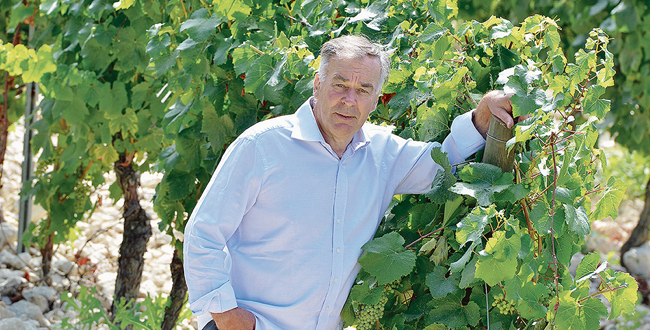
The following blog was written before the sudden passing of Eloi Dürrbach in November but has been edited following the sad news. Eloi's work and vision made Trevallon one of the great and best-known wines of France, which will rightly continue under his family's stewardship.
Domaine de Trevallon is unique. When Jacqueline and René Dürrbach bought the Provence property in 1950, it was surrounded by scrubland. René was an artist and friend of Picasso – a mark that is still felt keenly today on the labels and in the domaine’s architecture. Their son, the late Eloi, planted vines on the land in 1973 - a long-held ambition of his father – and the first vintage made was 1977. Though Eloi believed in the wines he was producing from the beginning, they struggled to sell until Aubert de Villaine of Domaine de la Romanée Conti visited and tasted the wines, recommending importers who could sell the wine around the world. Robert Parker went on to call it “one of the greatest discoveries of my career,” and despite his chequered opinion of the wines from then on, the wines were in demand.
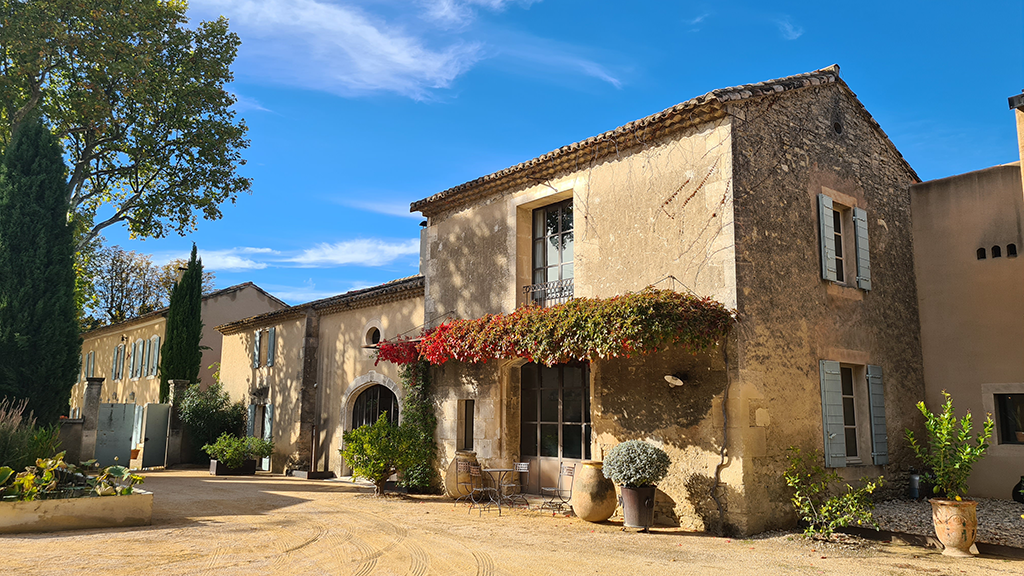
Eloi asked his father to draw 50 labels to adorn the bottles in the 1990s when his health was failing and these cubist designs would become part of Trevallon’s iconic image. The first vintage with one of these labels was in 1996, and there are a limited few usable ones remaining. It now falls to Eloi's family to decide what to do after these run out. Eloi was joined by his daughter Ostiane at the winery for several years before his passing and she has great knowledge of both property and wine style. In a recent visit to the domaine with her I learned what is changing, and what remains the same.
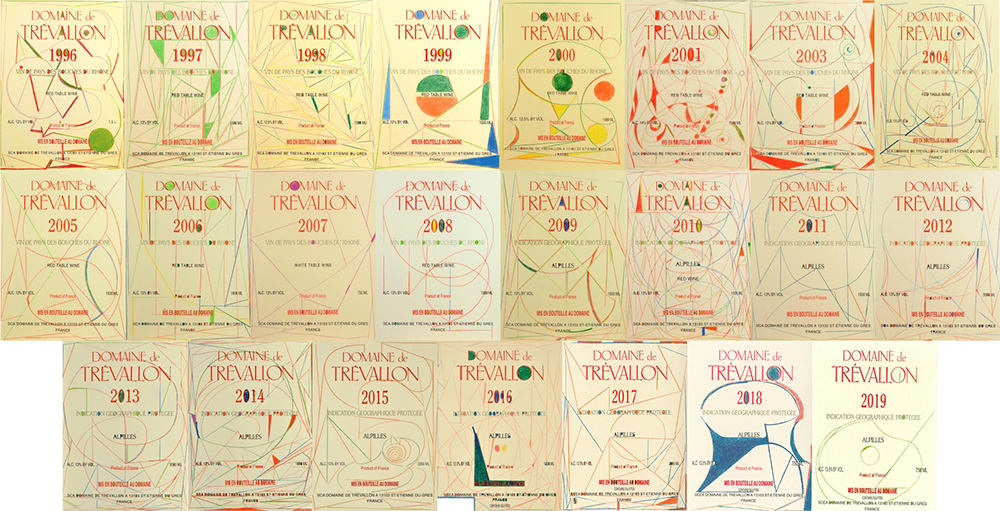
Basking in warm, late October sunshine, we look out over the vineyards closest to the domaine and remark how lucky we are to have such fine weather late in the year. The leaves are starting to turn burnt gold, with the fruit already fully picked, fermented and in barrels for maturation. The vines are in rude health here, and Ostiane confirms that no synthetics have ever been used at the property. Working by hand is both philosophically and practically the only way to work these soils properly. Equal parts of Syrah and Cabernet Sauvignon are planted over 17 hectares, with a small planting of white varieties to make the rare white blend which is predominantly Marsanne and Roussanne. We discuss the recent need to install anti-boar fencing to protect both fruit and the vines themselves – they lost a third of the crop to the animals in 2016. Esca (a disease that affects the old wood of the vine) begins to be an issue here as in so many areas with old vines, but action has been taken and things are improving. In 2021, the vineyard suffered its first frost since 1991, but thankfully the vines recovered, and production was not affected (unlike those less fortunate further north). The fruit is all picked by hand, an important feature to produce the style here with none of the Syrah or Cabernet destemmed before fermentation. Stems, particularly for Syrah, are essential to the intoxicating aromatic complexity and textural components of the wines.
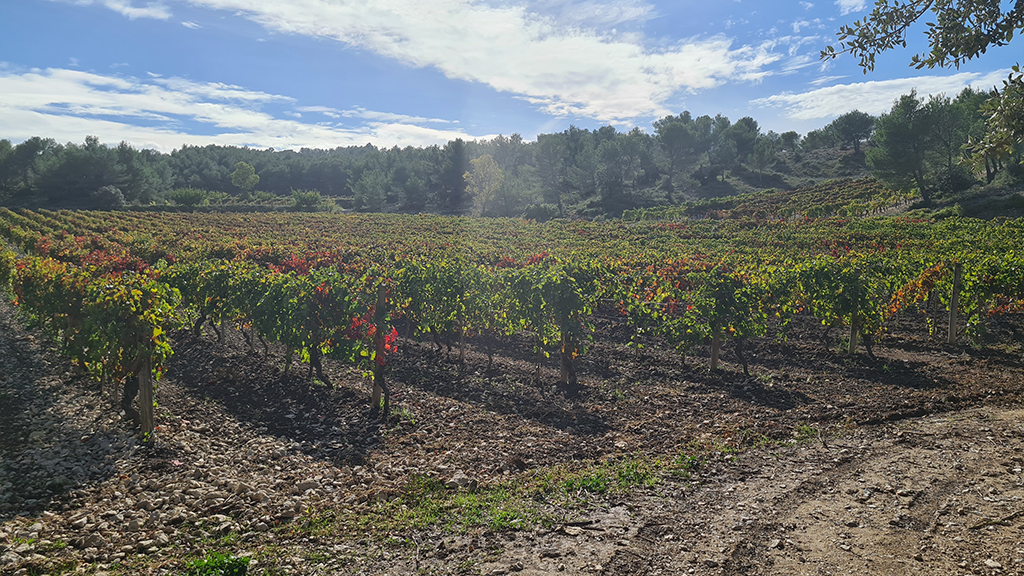
We move back through olive groves, from which a small volume of own-label oil is made, to the striking winery built in 2013 and modelled on René’s artist labels by architect Jean Bosc. Light filters in through the design into the cuverie, while mist rises in the freshly cleaned tanks now that fermentation is over. We first taste the 2021 whites by variety – they will not be blended until the end of their elevage. Barriques, demi-muids and (as is almost compulsory now) a concrete egg are used – there is even some acacia which lends a wonderful fragrance to the embryonic wines. Like most whites from the south of France, I believe this glossy, complex example to be at its best in youth. Once blended the wines are richly textured, with a satiny mouthfeel cut by admirably fresh acidity. The mix of varieties allows for a wonderful array of honeyed, tropical fruits and pithy citrus to show in tandem. Spice is present from the oak, but not overpowering.
The red is the heart of production, and little has changed in terms of the fruit brought into the winery other than the increasing vine age. The fruit is still 100% whole bunch fermented by ambient yeasts, with the varieties kept separate right through maturation. After blending, the wines are settled but not filtered before bottling. As the winemaking evolves, there is a push towards gentler extraction – the climate here brings effortless ripeness that does not require heavy manipulation to draw both structure and colour. This retains the harmony of the wines without detracting from the superb ageing potential. After alcoholic fermentation is completed, the wine is transferred to large barrels for a long elevage of up to two years. The unblended Syrah and Cabernet 2020 that we taste are both stunning. The Syrah is wonderfully fragrant – the underlying ripeness of dense black fruit is there, but it is equally deeply savoury. Pepper, garrigue and green olive all come through. This is wonderfully layered and moreish, it should provide real oomph to the blend. The fruit profile is akin to great Cornas, though the tannins have a succulence seldom found further north. By contrast the Cabernet Sauvignon is brooding and deep, led by cassis but marked by redolent woody herbs too. The palate is narrower than the Syrah yet there is more drive. The blackcurrant, cedar and dark cherry fruit is vertical and very long. It is chewy and structured; it will bring muscle to the blend as well as fruit purity. Together, they should make an outstanding vintage of Trevallon. Since Eloi's passing, it will likely be very difficult to source the 2020, but it is well worth seeking out.
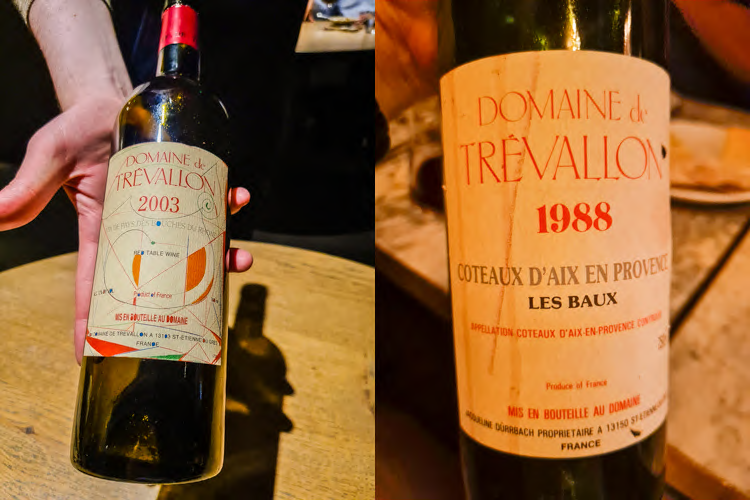
Before leaving, we move to the tasting room-cum-kitchen to taste the 2013 vintage. 2013 is not particularly celebrated anywhere in France, but in the southeast there was more success than anywhere else. This is a great example of what could be achieved. Mid ruby-garnet in the glass, the nose is savoury and complex already – the tapenade and garrigue herbs of Syrah matched by cedar and blackcurrant from Cabernet. The palate is silky and unforced, it is now open and ready to drink. Wild, brambly fruits, game and pepper unfurl in a midweight and sumptuous manner. It is elegant and still very long, it will no doubt drink well for over a decade. Older vintages of Trevallon are hard to come by these days but are well worth seeking out - I have recently tried great bottles of both the 2003 and 1988. They were brilliant and at different stages of maturity - the 2003 sweet in cassis with a gamey, tapenade note of Syrah that transparently displayed a solar vintage, the 1988 earthy and full of leather, closer to a mature Côte Rôtie than anything from Bordeaux. The combination of Cabernet Sauvignon and Syrah, made without over-manipulation or glossy oak, is a magnificent one. In great vintages these wines age for decades and are a worthy addition to any cellar.
I would like to thank Ostiane for such an excellent visit, and wish the family well in what must be a very difficult time. Eloi created an iconic Domaine at Trevallon with his family's support, and I am sure the wines will continue to go from strength to strength in the new generation.